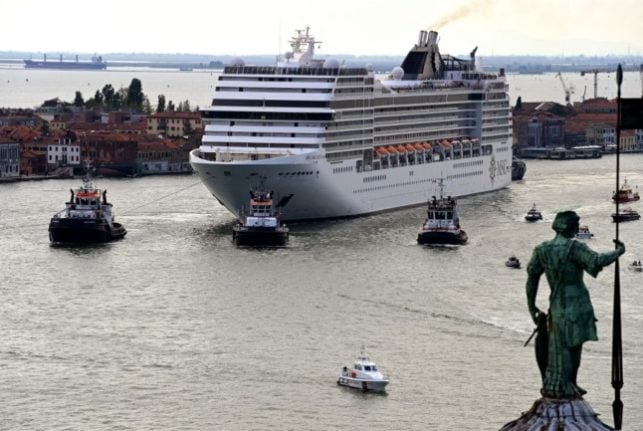The film, premiering at the Venice film festival, takes inspiration from director Kevin McDonald's YouTube-sourced film Life in a Day. It shows moments in the lives of 627 Italians from newborns to 104 years old who made the final cut.
Gabriele Salvatores, who won an Oscar for Mediterraneo in 1991, captures a day in Italy – specifically October 26th 2013 – from midnight to midnight,from discos to bedrooms, bathrooms, hospitals, prisons, care homes and schools.
This is not just a collection of clips of people rustling up steaming pasta dishes, saying "buongiorno" or drinking coffee – though there is lots of that.
The work also reveals Italians' fears as the country wallows in a recession, their uncertainty over their national identity and refusal to give up on dreams.
While several prisons were provided with recording equipment by the production team to allow inmates to take part, the rest of the material was filmed by Italians themselves on phones, home video cameras and GoPros, revealing both the quotidian and extraordinary.
"What you see on screen was what we received," Salvatores told journalists at the world's oldest film festival, defending the work from what one critic described as "an excess of people showing off their cats."
'Collective psychoanalysis'
"I believe an overdose of television newscasts on unemployment, on the loss of dignity in life, has created a move towards a greater focus on the private sphere, on self portraits, sort of lay confessions," he said.
"The project turned into a collective psychoanalysis session," he added.
Italy's ills are laid bare: from the unemployed young man firing off job applications in vain, to the state witness who rails against corruption, residents protesting over a garbage crisis, a lonely pensioner and a girl who hides from life under her bed sheet with her cat.
"If I was an Italian politician today I would be more moved by these things, even the scenes with cats, than I would be by the arguments and fights we see so often on television," Salvatores said.
"With this project people took the opportunity to send a message in a bottle. The social protest here is clear for all to see: here are ordinary people's desires to hold on to some dignity, to hold on to some of their dreams," he said.
The Italian director said he had been helped hugely by having the 2012 crowdsourced documentary Britain in a Day as a prototype, and managed to "expand and improve the concept, tripling the number of videos sent in by the public."
Now Indiana, the production house behind Italy in a Day, is teeming up with London-based Scott Free to produce Israel in a Day, according to Variety magazine.
Germany and France are also currently working on their own versions of the format, the entertainment magazine said.



 Please whitelist us to continue reading.
Please whitelist us to continue reading.
Member comments